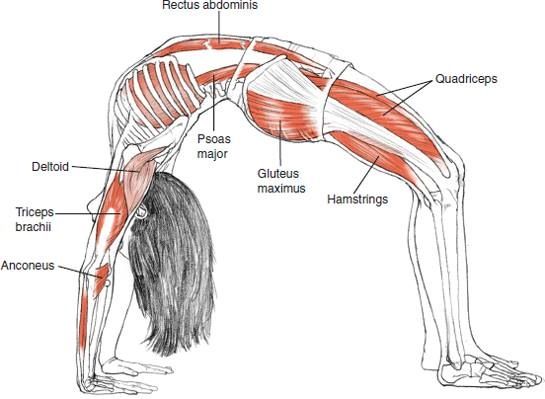Blog-asana: Words on Yoga
Anatomy of: Wheel
 Several of the open series classes have been focusing on the intricacies of urdhva dhanurasana, also called wheel or upward bow pose. Breaking out the straps to help with alignment, playing with picking up a hand or a foot (or both!), trying to stand up or drop back into the pose, all are good ways to experiment with an iconic asana when performed safely.
Several of the open series classes have been focusing on the intricacies of urdhva dhanurasana, also called wheel or upward bow pose. Breaking out the straps to help with alignment, playing with picking up a hand or a foot (or both!), trying to stand up or drop back into the pose, all are good ways to experiment with an iconic asana when performed safely. The sanskrit name of the pose begins with udrhva, meaning "upward". Normally when moving up, the muscles we think to engage involve PUSH rather than PULL functions. However, this pose has a balance of involved muscle groups, and when examined looks a lot more like an actual balance than a supported or strength pose.
The major muscles involved in wheel are:
- The quadriceps - the big, meaty muscles on the front of your upper legs
- The psoas - a long band of muscle that reaches from the inside of the top of your thigh bone all the way to your lumbar vertebrae in your lower back
- The lats - the muscles that support the back side of the ribs and the shoulder blades
- The triceps - the muscles on the backs of the arms, used for pushing things away
There are many poses for which this is true, where alternate muscles are engaging and gaining strength from each other and enabling more complex yet stable positions of the body. The next time you press into wheel, think about buidling a block tower, and stack all your muscles up on top of one another, letting each successive group gain strength from the one before it.
Happy hump day, and Namaste!
